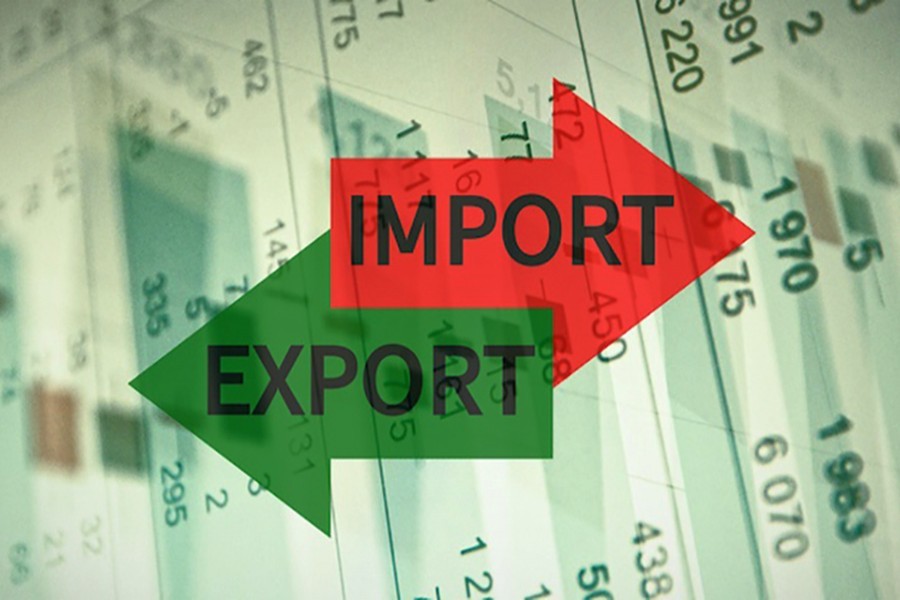Bangladesh's trade gap doubles to $12.53b in July-November period

Published :
Updated :

Bangladesh saw its trade deficit more than double in the first five months of the current fiscal year as higher import-payment pressure on the economy causes account imbalance, officials say.
The deficit in trade with the rest of the world widened by 148.31 per cent or US$7.48 billion to $12.53 billion during the July-November of the FY 2021-22 against $5.05 billion in the same period of FY'21, according to the central bank's latest statistics.
During the period under review, import expenses swelled nearly 54 per cent while export earnings recorded a 22.65-per cent growth.
The overall import cost stood at $31.17 billion in the July-November period of FY '22 against $20.24 billion in the same period a year earlier while export earnings rose at a slower pace to $18.64 billion from $15.19 billion.
"It's a temporary phenomenon," a senior official of the Bangladesh Bank (BB) told the FE while explaining the latest trend in foreign trade of Bangladesh. "We've taken more time to reach pre-covid level."
Actually, the foreign trade, covering import and export, has increased significantly during the period under review amid gradual reopening economic activities, both domestic and global, after more than one year of pandemic disruptions.
Besides, higher prices of essential commodities, including petroleum products, on the global market have also pushed up the country's import payments during the period, according to the official.
He also says the uptrend in external trade may continue in the coming months following the reopening of business activities across the globe.
Talking to the FE, Mustafa K Mujeri, executive director of the Institute for Inclusive Finance and Development (InM), said export earnings along with the inflow remittances should be enhanced to shoot down the flying trade deficit.
"The government should facilitate exploring new markets for boosting export earnings in the near future," the senior economist suggests as a measure of managing the imbalance.
He also says export of high-value products along with basic ones should be increased further for strengthening the overall export earning of Bangladesh.
"Monitoring should be expedited to curb non-essential imports," Mr Mujeri, also a former chief economist of the BB, said while replying to a query.
Meanwhile, the country's current-account deficit deteriorated further during the period under review following higher import-payment obligations alongside lower inflow of remittances.
The current-account deficit rose to $6.19 billion during the July-November period of FY'22 from $3.78 billion a month before. It was $3.55 billion surplus in same period of FY'21.
The inward flow of remittances dropped by nearly 21 per cent to $8.61 billion in the first five months of FY'22 from $10.89 billion in the same period of FY'21as money transfers through informal channels such as hundi resurfaced after a lull caused by the coronavirus pandemic.
Experts, however, predict that the ongoing upturn in the current-account deficit may continue in the months ahead if the lower inflow of remittances and higher import expenses persist.
They also feel pressure on exchange rate may increase further if the upward trend in current-account deficit persists in the near future.
However, the financial account's surplus improved further following higher inflows of medium-and long-term loans as well as aid flows, according to the BB officials.
The financial account's surplus rose to $4.59 billion during the July-November period of FY'22 from $1.47 billion in the same period of the last fiscal year.
Actually, the soaring deficit in trade as well as the current account reflects the growing imbalance of the external account, thus creating mounting pressure on the country's overall balance of payments (BoP).
The BB data show that the BoP had posted a negative balance of $2.02 billion in the first five months of FY'22 against a positive balance of $5.07 billion in the same period of FY'21.


 For all latest news, follow The Financial Express Google News channel.
For all latest news, follow The Financial Express Google News channel.